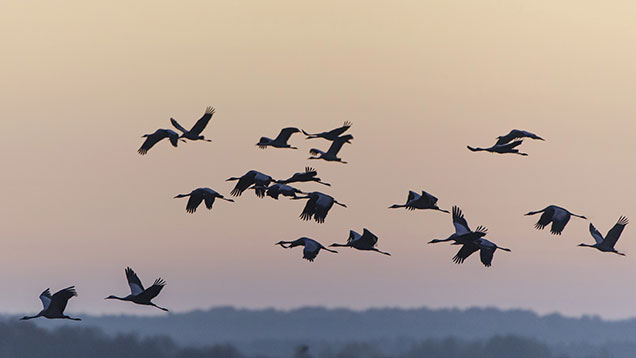Opinion: Stewardship scheme makes farmers ‘twitchy’
 © Rex
© Rex I like to think that my knowledge of birds is just about up to scratch.
I can, for example, distinguish my turtle doves from my collared coves. But I will readily confess that I’m no twitcher.
My ornithological vocabulary is rather overpopulated with ‘LBJs’ (little brown jobs) when it comes to identifying a lot of small bird species seen from the cab.
Occasionally I’ll come across what I like to call a ‘WTF’. Or to give it its full title a ‘WTF is that?’ These are usually rare migrants that pay my coastal farm a fleeting visit in the spring or autumn when migratory birds are on the move.
See also: Protests made Brussels part-carnival, part war-zone
I can tell if there is a WTF about because the lane on the south side of the farm becomes peppered by huddles of twitchers peering into telescopes.
When driving past these small assemblies, I’ll stop the tractor to find out what rarity has graced my farm with its presence.
 Guy Smith comes from a mixed family farm on the north-east Essex coast, which is officially recognised as the driest farm in the UK. He is also vice-president of the NFU
Guy Smith comes from a mixed family farm on the north-east Essex coast, which is officially recognised as the driest farm in the UK. He is also vice-president of the NFUJust the other day, I was duly informed it was a pair of pallid harriers that could be spied through the long lenses.
Chatting with the twitchers, I could only conclude that they were a rather dull species with an unusual gait.
By contrast the pallid harriers had distinctive markings and were masterful in the air!
So while we are on the subject of farmland wildlife, I’m minded to discuss the new Countryside Stewardship scheme. Like most of my fellow farmers we are currently in ELS. I like to think I’m part of the current generation of farmers who have embraced the conservation agenda.
Indeed, in the UK an impressive 70% of UK farmland is currently in some sort of agri-environment scheme but, like thousands of others, my scheme will finish in the next couple of years. The question is: What do I do then?
Having briefly looked at Countryside Stewardship, I can’t say I’m attracted to it. And it would seem I’m not alone.
In fact, surveys suggest I am very much the norm here. Indeed when the mid-tier of Countryside Stewardship was launched, less than half the numbers anticipated by Natural England put in applications.
What’s more, it’s clear that this is not so much farmers walking away from agri-environment, it’s actually the new schemes walking away from farmers.
The rules are confusing, if not unfathomable. The burden of record-keeping is ridiculous. The options seem very limited. No one trusts the umpires not to move the goal posts at a later date. The money on offer to compensate the “income forgone” seems very unrewarding.
And that’s when farmgate prices currently are at the low part of the cycle. If cereal, milk or red meat prices pick up, then the money offered will look even more unexciting.
It seems clear we are staring at a scenario where only a small fraction of those in ELS/HLS will be in schemes in a few years time and Countryside Stewardship will be hopelessly underpopulated.
For a myriad of reasons it is important that as many farmers as possible are kept within the agri-environment ambit and culture.
There is also the issue of whether the budgets accompanying the new schemes will be spent.
It is time for Defra and their agencies to have a good hard look at Countryside Stewardship as to where it appears to be heading.
If the direction of travel is not the intended one, then they need to be brave enough to make the necessary changes to keep things on track.
